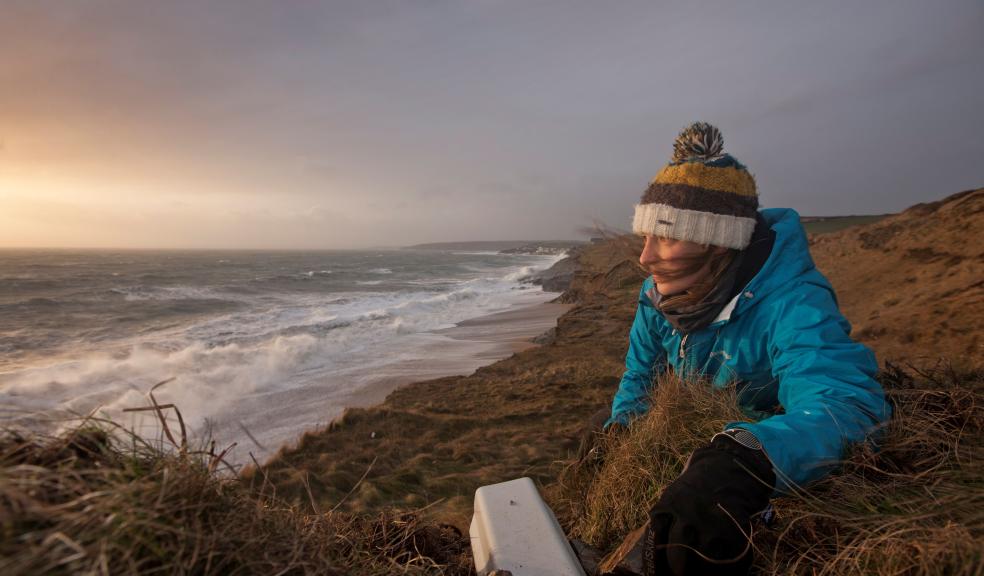
Ground-shaking research into the power of winter storms
The violent winter storms that rocked the country in 2014 had the power to physically shake cliffs to a degree in excess of anything recorded previously, say marine scientists.
A team at Plymouth University used seismometers, laser scanners and video cameras to evaluate the impact of the massive waves – up to 8 metres high – that struck the cliffs in Porthleven, West Cornwall, during January and February.
In a paper accepted for publication in Geophysical Research Letters, the team from the Coastal Processes Research Group found that the level of shaking was of an order of magnitude greater than ever previously recorded.
They also recorded 1,350 cubic metres of cliff face being eroded along a 300-metre stretch of coastline in just two weeks – a cliff retreat rate more than 100 times greater than the long-term average.
PhD student Claire Earlie, in the School of Marine Science and Engineering, said: “Coastal cliff erosion from storm waves is observed worldwide but the processes are notoriously difficult to measure during extreme storm wave conditions when most erosion normally occurs, limiting our understanding of cliff processes.
“Over January and February 2014, during the most energetic Atlantic storm period since at least 1950, with deep water significant wave heights of 6–8-metres, cliff-top ground motions showed vertical ground displacements in excess of 50–100μm (microns), an order of magnitude larger than observations made previously anywhere in the world.”
Using seismometers on loan from Scripps Institution of Oceanography, University of California, Claire and the team embedded the instruments seven metres from the cliff's edge. Within two weeks, they were just five metres from the edge, such had been the rate of erosion.
Terrestrial laser scanner surveys conducted from the beach also revealed a cliff face volume loss two orders of magnitude larger than the long-term erosion rate.
Professor Paul Russell, who helped to supervise the project, said: “The results imply that erosion of coastal cliffs exposed to extreme storm waves is highly episodic and that long-term rates of cliff erosion will depend on the frequency and severity of extreme storm wave impacts.”
Research lead Professor Gerd Masselink added: “Our coastline acts as a natural barrier to the sea, but what we've seen right across South West England is unprecedented damage and change, from huge amounts of sand being stripped from beaches to rapid erosion of cliffs.
“These figures will help to explain some of the invisible forces being brought to bear on our coastal structures, and highlight the risk of sudden cliff damage.”
The paper, Coastal cliff ground motions and response to extreme storm waves, is available at http://onlinelibrary.wiley.com/doi/10.1002/2014GL062534/pdf












